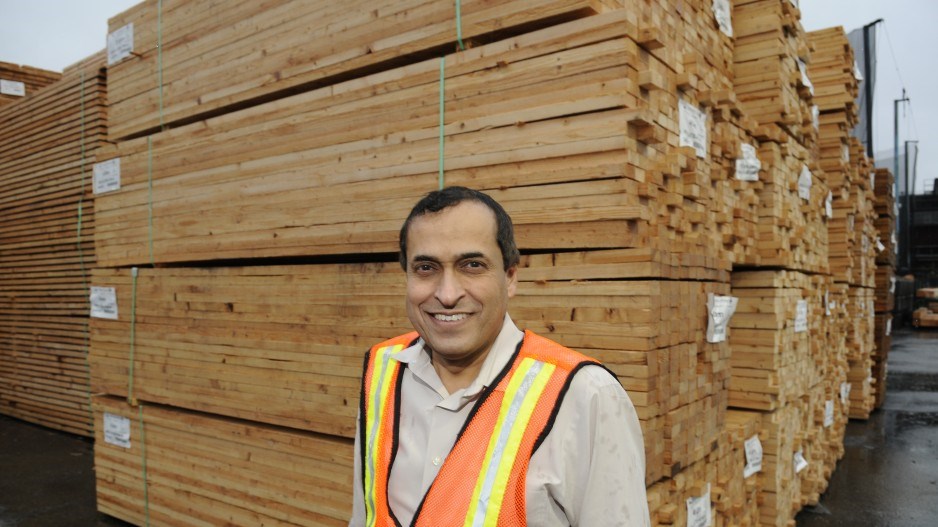Teal Jones is shutting down second growth logging operations in its Honeymoon Bay operations on Vancouver Island, citing high stumpage prices.
And that will inevitably translate into more curtailments at the company’s sawmills, said Teal Jones CFO Haniff Karmally.
“It’s very significant for the mills,” Karmally said.
Like most other forestry companies in B.C., Teal Jones has already taken several curtailments at its lumber mills in recent months, due to both falling lumber prices in the U.S. and rising stumpage costs, resulting in temporary layoffs.
“We have taken more curtailment this year and over the last 12 months than we can recall ever taking,” Karmally said. “Our mills have been down for one month to the end of April already. So we’ve taken 25% curtailment this year in the mills.”
About half of Teal Jones’ tree farm licence on Vancouver Island (TFL46) is old growth.
Logging will continue on the old growth, Karmally said, which accounts for about half of the company’s annual allowable cut of 368,000 cubic metres per year. But it will cease all logging on its second growth. The immediate impact will be on logging contractors.
“They will have to create some layoffs,” Karmally said. “They have no choice. This is impacting about half the operation.
“The old growth is profitable, just because of its value,” Karmally said. “Second growth, by its very nature…is of much less value.”
Stumpage is what the provincial government charges companies to harvest timber on Crown land. The market value of logs affects stumpage prices.
Karmally said the higher premiums from log exports have boosted stumpage costs. He added the company believes there has also been speculative bidding on BC Timber Sales, which could also be driving stumpage rates up.
He said stumpage rates for coastal timber have roughly tripled within about a year.
Karmally said the B.C. government has plans under its Coast Forest Sector Revitalization plan to bring stumpage charges more in line with domestic prices, which should bring stumpage prices down, but he said that is not expected to happen until sometime next year.




